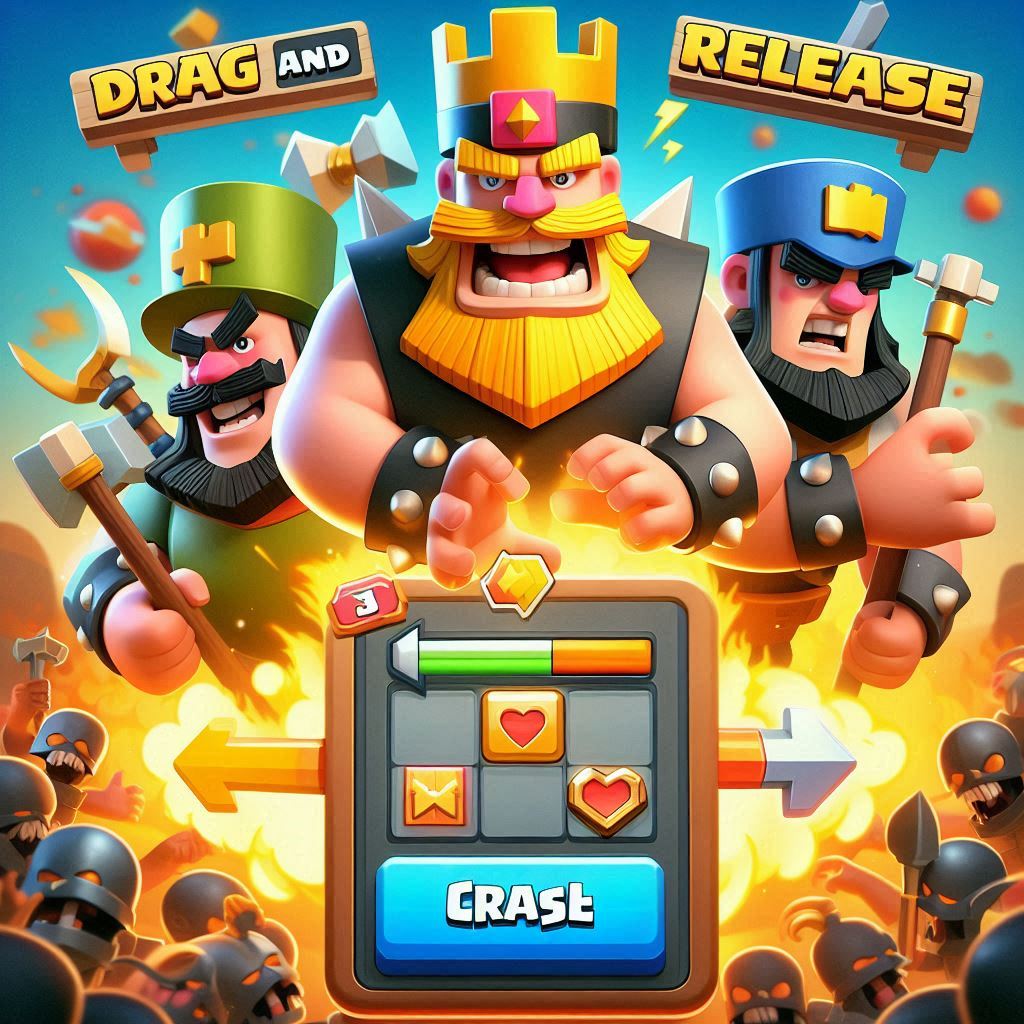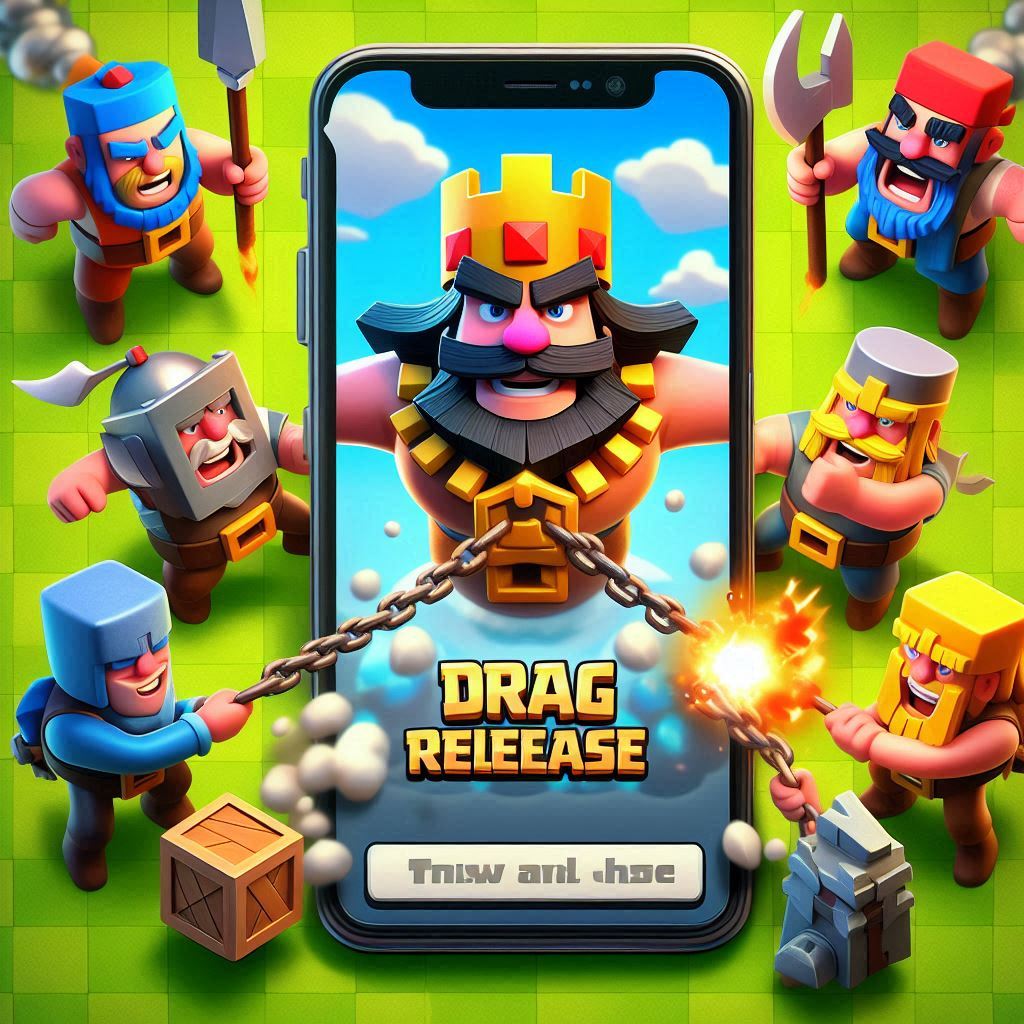Drag and Release Game Mechanics
In the dynamic world of video games, game mechanics play a crucial role in shaping the player experience. One such mechanic that has gained significant traction is the drag and release game mechanic. This innovative approach to gameplay has captivated both developers and players, offering a unique and engaging way to interact with digital environments.
The drag and release mechanic is characterized by the ability of the player to click and hold an in-game object, drag it to a desired location, and then release it to trigger a specific action or event. This intuitive interaction allows players to feel a greater sense of control and immersion within the game world, as they directly manipulate the objects and elements around them.
One of the primary advantages of the drag and release mechanic is its versatility. It can be seamlessly integrated into a wide range of game genres, from puzzle-based adventures to fast-paced action titles. By leveraging this mechanic, developers can create unique and engaging gameplay experiences that challenge players’ spatial awareness, problem-solving skills, and hand-eye coordination.
In the realm of puzzle games, the drag and release mechanic shines particularly bright. Players can use this mechanic to manipulate various objects, such as blocks, gears, or levers, in order to solve intricate puzzles and progress through the game. The tactile feel of dragging and releasing these elements adds a layer of immersion and satisfaction to the puzzle-solving experience.
Beyond puzzle games, the drag and release mechanic has also found its way into other game genres, such as strategy titles and physics-based simulations. In these contexts, players can use the mechanic to control the trajectory and placement of in-game objects, allowing for more precise and nuanced interactions with the game world.

One of the key factors contributing to the popularity of the drag and release mechanic is its intuitive and user-friendly nature. The mechanic leverages the natural gestures and movements that players are already familiar with, making it easy to pick up and understand. This accessibility can be particularly beneficial in attracting casual or new players, who may be more inclined to engage with a game that offers a straightforward and intuitive control scheme.
The implementation of the drag and release mechanic can also have a significant impact on the overall game design and development process. Developers can use this mechanic to create unique puzzles, challenges, and interactive elements that keep players engaged and invested in the game’s progression.
Furthermore, the drag and release mechanic can contribute to the game’s visual and aesthetic appeal. By allowing players to directly manipulate in-game objects, the mechanic can create a sense of visual responsiveness and interactivity, enhancing the overall visual and tactile experience for the player.
In the realm of mobile gaming, the drag and release mechanic has found particular success. The touch-based nature of mobile devices lends itself well to this type of interaction, allowing players to easily engage with the game using familiar gestures and movements.
As the video game industry continues to evolve, the drag and release mechanic is likely to become an increasingly prominent feature in game design. Developers are constantly exploring new ways to create engaging and intuitive gameplay experiences, and the drag and release mechanic offers a compelling solution that can captivate players across a wide range of genres and platforms.
One of the challenges in implementing the drag and release mechanic effectively is ensuring it is seamlessly integrated into the overall game design. Developers must carefully consider factors such as the responsiveness of the controls, the precision required for successful interactions, and the impact of the mechanic on the game’s pacing and difficulty.
Additionally, the drag and release mechanic can present unique design considerations when it comes to accessibility and inclusivity. Developers must ensure that the mechanic is accessible to players with various physical abilities and that it does not create unnecessary barriers to entry or enjoyment.
As the industry continues to explore the potential of the drag and release mechanic, we may see further advancements and innovative applications of this technology. This could include the integration of more advanced physics simulations, dynamic object interactions, and even the incorporation of virtual or augmented reality to enhance the immersive experience.
The popularity of the drag and release mechanic has also led to the emergence of a growing community of game developers and enthusiasts who are dedicated to exploring its potential. These individuals share their insights, best practices, and experimental approaches, further driving the evolution and refinement of this engaging game mechanic.

In the broader context of game design, the drag and release mechanic represents a shift towards more intuitive and player-centric interactions. As players increasingly demand engaging and responsive experiences, the adoption of this mechanic can serve as a testament to the industry’s commitment to meeting the evolving needs and preferences of the gaming audience.
One of the key strengths of the drag and release mechanic is its ability to create a strong sense of player agency and control. By allowing users to directly manipulate in-game objects, the mechanic empowers them to actively shape the game world, fostering a deeper level of engagement and investment in the overall experience.
The drag and release mechanic also lends itself well to the incorporation of physics-based simulations, where the movement and behavior of the dragged objects are influenced by realistic physical properties. This integration can add an extra layer of challenge and realism to gameplay, as players must consider factors such as mass, velocity, and momentum when positioning and releasing objects.
In the context of game development, the drag and release mechanic can pose unique technical challenges. Developers must ensure smooth and responsive controls, accurate object detection and collision detection, and seamless transition between the dragging and releasing states. Overcoming these technical hurdles can be a significant but rewarding aspect of the design process.
The adaptability of the drag and release mechanic also extends to the realm of user interface (UI) and user experience (UX) design. Developers can leverage this mechanic to create intuitive and visually appealing UI elements, such as drag-and-drop interfaces for file management or customization tools, further enhancing the overall player experience.
Beyond its application in traditional video games, the drag and release mechanic has also found a home in the world of educational and productivity-focused software. In these contexts, the mechanic can be used to facilitate tasks such as lesson planning, data visualization, and content organization, making complex processes more accessible and engaging for users.
As the gaming industry continues to evolve, the drag and release mechanic may also become an integral part of the development of new and emerging technologies, such as virtual reality (VR) and augmented reality (AR). In these immersive environments, the ability to directly manipulate digital objects through natural gestures and movements can lead to even more immersive and captivating gameplay experiences.
The widespread adoption of the drag and release mechanic has also led to the rise of dedicated communities and resources focused on its implementation and optimization. Game developers, designers, and enthusiasts share their knowledge, best practices, and innovative ideas, further driving the evolution and refinement of this game-changing mechanic.
Looking to the future, it is likely that the drag and release mechanic will continue to play a pivotal role in shaping the design and interactive experiences of video games and other digital applications. As technology advances and user preferences continue to evolve, this mechanic will undoubtedly remain a valuable tool in the arsenal of creative and innovative minds shaping the digital landscape.
In conclusion, the drag and release game mechanic has become a significant and influential aspect of the video game landscape. Its versatility, accessibility, and ability to enhance player engagement have made it a valuable tool in the arsenal of game developers. As the industry continues to evolve, the drag and release mechanic is poised to play an ever-increasing role in shaping the future of interactive entertainment.

Our game development Team produced a 3D online Android game with drag and release mechanics. This game is also a strategic and turn-based game where the players make their choice and shoot in each turn. Also, our game is based on blockchain technology and in addition to having fun, players can also Earn Money from our game. You can download our game from Google Play Store through this Link and subscribe to our YouTube channel for more information.



